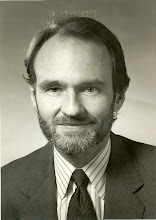There is plenty of noise from the E-Z but best for us remain anchored, centered regarding the US.
Developments in Europe will not provide serious impediments to US growth; in fact, they may provide a bit of a spark. Developments there have however provided impediments to strategy making as the US curve remains artificially impacted. Given E-Z events are of a wild card nature, at least to us, we have been out of this and similar illustrative trades for several weeks.
It is not of course only flight to sanctuary that is billowing US debt prices. After the last two NFP results, observers have the US in a repeat of the previous two years – a spring faint.
Not this time. We all know now, after the fact, that some jobs which are usually created in spring were created earlier given the weather, thus the dip. No doubt. But that is also history.
Our task is to identify the economic landscape just ahead. In fact there has been very little change applied to the US throttle – she will accelerate moderately into, and through H2.
We all know the consumer is key. But the consumer has been underrated. Because earned income has been flat, most economists figured spending would too. Early on we explained why they would be wrong, that consumers would go to savings and credit cards to take up the slack. That was the result. That pattern will continue over the intermediate term, until private sector jobs catch up.
Early Q1 we had crude prices as the piano overhead for the consumer. Gasoline peaked Apr/2. Iran is still capable of mischief but for the moment, cheaper gasoline naturally provides further spark to the consumer.
Much was made of the so-called “labor participation” rate, last Payroll print (Apr/4). It was a feast for the media and street economists. The low rate - 63.6% - is tied to demographics they said, and we’re all in trouble if this continues; malaise for years to come.
Instead, the primary driver of plummeting participation resides in Washington. For example, Obama’s policy of making the food stamp program more generous and more easily available, thus enabling more to qualify in the act of remaining unemployed is a prime culprit. Also, policies were invented to reduce mortgage debt for certain families, thus reducing the incentive at the margin, to work.
As we have highlighted for several years, Obama’s policies have both worried employers due to smothering regulations (and the threat of more of the same), and, discouraged job seeking through the creation of greater incentives to remain unemployed; that is, to stay out of the labor force. Not launching a satellite now folks. It is not a coincidence that the participation rate plummeted upon Obama’s election. He inherited a difficult situation, one in which he had a hand in creating, and then proceeded to make it much worse.
Robert Craven

No comments:
Post a Comment